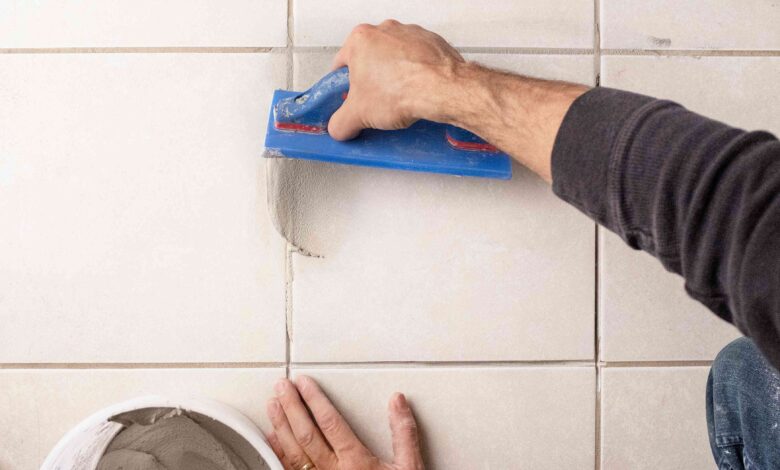How to Choose the Right Grout For Tile In Bathroom

Grout For Tile In Bathroom is a misjudged substance that assumes a vital part in the manner that your general tile configuration will come out. From giving footing when utilized in flooring applications to upgrading your tile’s look just as life expectancy, it does a great deal. Thus, us as tile darlings that you become familiar with this strong helpful plan component and the kinds of grout that exist. Choosing the right and elegant Grout For Tiles In Bathroom is an important factor to consider.
Today we investigate this substance and do a fast overview of the relative multitude of types presented available to assist you with planning for your next home improvement tile project.
Grout For Tile In Bathroom fills the holes between tiles to give your backsplash, floor, or shower greater toughness and a cleaned appearance. Made of a mixture of cement, water, shading colors, and in some cases sand, this filler holds dampness or trash back from getting underneath tiles and watches tile edges against harm. Grout joints can likewise assist with expanding the slip-opposition of a surface, which is particularly significant for tiled showers and washroom floors, which can become smooth. To put it plainly, grout ensures the security and presence of your tiled region after some time, so it’s a fundamental part in any establishment.
What Is Grout and Why Use It?
First of all, for those pondering “What is grout?” Allowed us to clarify.
Grout For Tile In Bathroom is the glue that occupies the spaces between every one of your tiles (normally called a “grout joint”). This is significant on the grounds that not all tiles, especially those terminated in a furnace, for example, earthenware or fired tiles, have completely straight and even edges, and most all tiles are permeable. The grout fills the holes and adjusts the tiles.
It likewise assists with holding the tiles set up by holding the sides together and fortifying the general construction. Here and there, it likewise adds slid-opposition.
The substance has an unpleasant surface, and generally, goes unrecognized except if it is planned to say something. Tile grout ordinarily comprises of a mix of water, colorant and cement.
While they may all clone the unaided eye, there are 3 primary sorts that you ought to get to know.
When picking tile grout, decide the right kind for your task and select a shade that will supplement your picked tile. Utilize our aide beneath to find out about tile grout tones and types, alongside tips on how to decide how much grout you’ll require for a particular undertaking.
Types of Tile Grout For Tile In Bathroom
Grout comes in two fundamental sorts: sanded and unsanded. Sand gives grout additional steadiness, yet it can start to expose more fragile tiles. Grout that doesn’t contain sand ought to be utilized for stone tiles like marble. Unsanded grout is likewise best for limited joints estimating 1/8 inch wide or less. Grout For Tile In Bathroom made with sand is utilized for most other tile establishments with joints more extensive than 1/8 inch. You can likewise help the adaptability of your tile grout by including polymer-added substances, which are vital for making joints as wide as 1-1/4 inches. Adhere to the producer’s directions on the bundle for your tile type. Both sanded and unsanded grout should be fixed to ensure against soil, stains, and blurring.
Tile Grout Tones
Neutrals and hearty tones are the absolute most well-known tile grout tones, yet you can likewise observe more dynamic shades including blues, greens, and even pinks. By and large, a grout shading that differences with your tile will make the singular tiles pop, while a comparative shade will make a smoother general look. For instance, fixing white tram tile with dark grout adds fresh definition around each piece, carrying surface and aspect to a backsplash. Then again, utilizing cream-shaded grout against unbiased floor tiles offers a subtler, bound together appearance. For a fair compromise, a light dim grout functions admirably with white tile, and a sandy-shading grout combines pleasantly with brown or impartial tiles. Remember that dull tile grout shadings will conceal soil and stains more viably than lighter tones.
Tips on Regrouting Tiles
Assuming you need to spruce up grout between existing tiles, realize that new grout doesn’t cling admirably to old grout. Assuming you need to do the work right, you’ll need to eliminate the old grout. It’s ideal to enlist an expert for this piece of the venture since you want to utilize a high-velocity point processor to painstakingly see out the old grout. Caution: It’s not difficult to cut the tile simultaneously. In case you’re not convenient with this hazardous contraption, eliminating grout is best left in the possession of an expert.
Deciding How Much Tile Grout You want
The measure of tile grout required relies upon the kind and brand of the grout. To start with, choose the grout you need to utilize (shading and type) and counsel the bundling. Appropriate mixing directions are ordinarily imprinted on the case or pack, alongside what number square feet it should cover. As a rule, little tiles need more grout than bigger ones because there are more joints to fill. When mixing the grout, it ought to be the consistency of delicate margarine, possibly somewhat stiffer. Then, let the grout and shading item sit, as suggested, to synthetically bond. Before establishment, be sure the surface and materials being grouted are appropriately cleaned.
Legitimate Grouting for Tile Establishment
The shade of your Grout For Tile In Bathroom is observable, and nobody prefers the vibe of old grout! The appropriate application makes it put its best self forward, however, it likewise shields from staining, stains, breaks, chipping and makes it more straightforward to keep clean consistently. Before beginning a Do-It-Yourself project, ensure you research the right sealer for your tile decision and legitimate application procedures to guarantee victory.
Establishment Expenses
With regards to the establishment, expenses might change. A couple of key things that will influence the general cost are the degree of skill of the project worker you work with, the region that the Grout For Tile In Bathroom will be put in, and the grout that you choose. The expense per square foot can be $2-$4.
Since you have an idea about what grout is, how it works inside your plan, the different choices and shadings, go ahead and click underneath and look at our broad choice today!
Use bonding coats or Keycoats for your floor joints.




